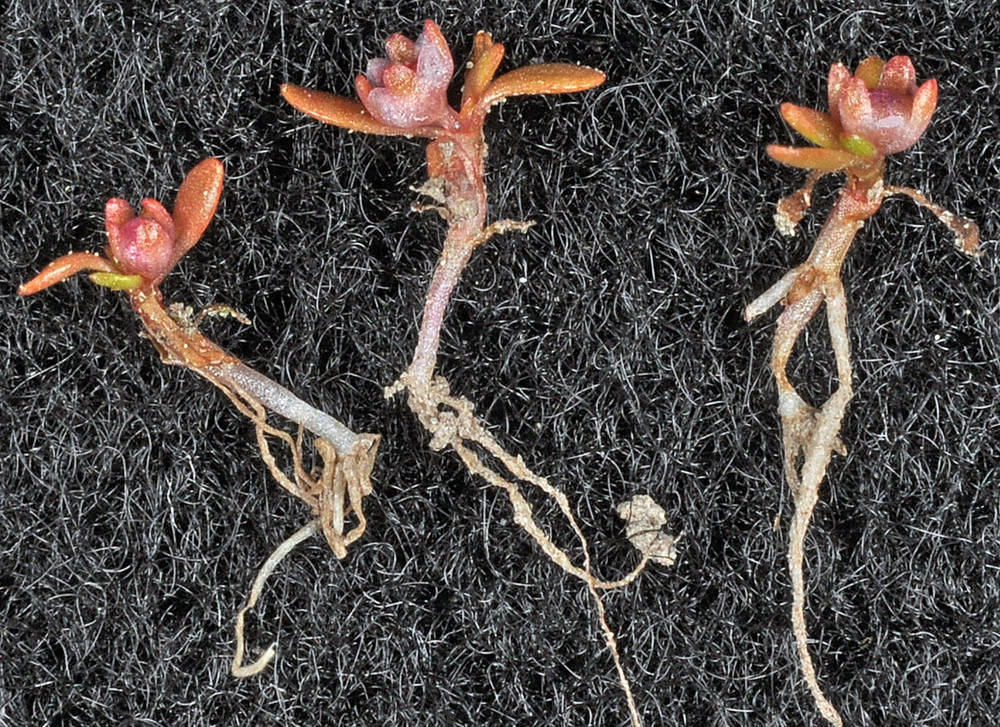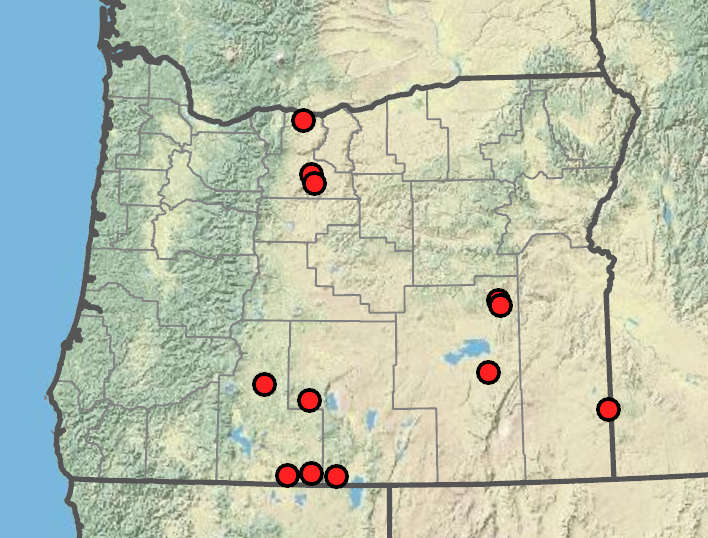Elatine californica
Elatinaceae
California waterwort
waterwort family
light green to green (reddish green);
internodes 2–12 mm.
erect to prostrate, green; reddish green, or red.
blades spatulate or elliptic, 3–12 mm;
petioles 0.5–6 mm.
opposite; simple;
tips acute, petiolate;
stipules 2.
peduncles recurved, usually > 1.5 mm.
axillary;
cymes or flowers solitary;
bracts absent, pedicelled.
(0.1)1.5–4 mm;
sepals 4, sometimes 1 smaller;
petals 4;
stamens 8;
carpels 4.
bisexual; radial; bell- or urn-shaped;
sepals 3–5, 1 smaller; free;
petals 3–5; free or connate basally;
nectaries 0;
stamens 3–10;
filaments free;
anthers dehiscent by slits;
pistils 1;
ovaries superior;
carpels 3–5; placentas axile;
ovules 3–many per chamber;
styles 3–5;
stigmas 3–5.
disk-shaped to compressed globose, 4-locular.
capsules.
16–24, highly curved to nearly circular, 0.5–0.7 mm;
surface pits 20–27 per row; length 1.2–2 × their width.
9–36.
Elatine californica
Elatinaceae
In or near puddles, ponds, reservoirs, lakes, and marshes. Flowering Mar–Aug. 50–1600 m. Col, ECas. CA, ID, NV, WA; northeast to MT, southeast to NM, south to Mexico. Native.
Elatine californica can be distinguished from all other Elatine species in the Unites States by its four-merous flower parts and nearly circular seeds. Both morphological and molecular analyses (Razifard et al. 2017) support a close affinity between E. californica and E. hydropiper, which occurs in Central Asia, Europe, and North Africa.
Nearly worldwide in aquatic habitats. 2 genera.
Elatinaceae is composed of aquatic species found near rivers as well as in wetlands, ponds, reservoirs, and lakes. Cleistogamous (i.e., non-opening, self-pollinating) flowers are very common in this family (Leach 1989; personal observation). A few species grow in rice fields in the United States and other countries (Rosman et al. 2016; DiTomaso & Healy 2007; Tucker 1986). Also, some species are popular aquarium plants (De Wit 1964).
Hamid Razifard, Gordon Tucker, Donald Les
- Local floras:
CA,
OR,
WA
- Local Web sites:
CalFlora,
CalPhotos,
Flora NW,
PNW Herbaria
WildflowerSearch
iNaturalist (observations)
USDA Plants Database
- LBJ Wildflower Center
- SEINet
- Plants of the World Online
- Encyclopedia of Life
- Wikipedia
- Google Image Search
- Local floras:
CA,
OR
- Local Web sites:
CalFlora,
CalPhotos,
Flora NW,
PNW Herbaria
WildflowerSearch
iNaturalist (observations)
- LBJ Wildflower Center
- SEINet
- Plants of the World Online
- Encyclopedia of Life
- Wikipedia
- Google Image Search



